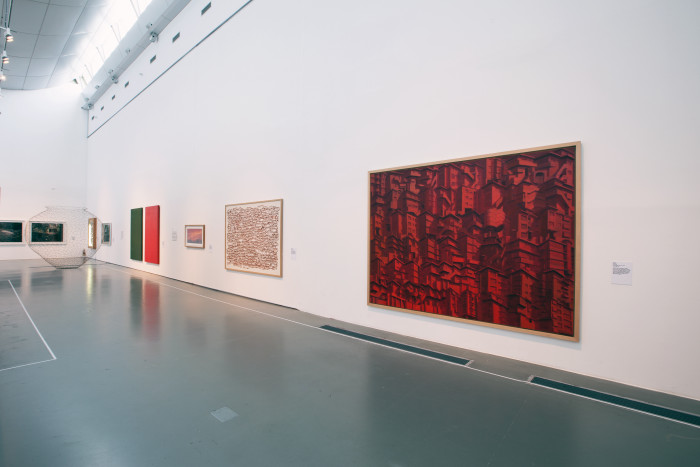Kkumteul (“Dream Framework”),
Vehicle to Store Greater Dreams
Hwang, Rockjoo
Curator, Gyeonggi Museum of Modern Art
Art Museum, Opening the Door for Children
There are still many who are curious about what an art museum does. Even those who visit the museum once or twice a year tend to say that it is difficult to connect the institution with any specific meaning. It is particularly so, they say, when it comes to the museum for contemporary art. The atmosphere created by enigmatic art works and a space which is completely different from the one familiar to us through our daily activities has led them to continue to raise questions about the role of the museum. In this case, what should a museum be for the local community? Why should a museum be a part of our daily life? What answer is there for the museum to unify itself with the daily lives of its visitors? Kkumteul, or “Dream Framework,” is what the Gyeonggi Museum of Modern Art proposes as its answer to such a question, or a topic to be debated hotly among the public.
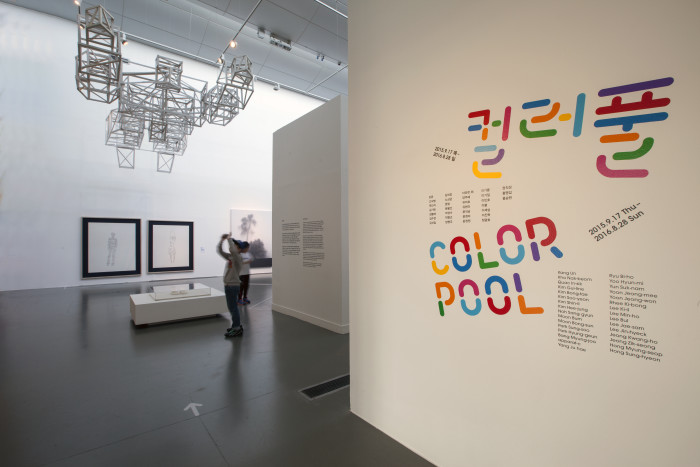
In 2013, the Gyeonggi Museum of Modern Art started a work to lower the threshold of, or place a stepping stone to, the art museum by turning an area of the special exhibition hall into a children’s gallery. This space designed for children’s creative imaginations was given the name Eorini Kkumteul, or “Children’s Dream Framework.” Since its foundation, the children’s gallery has played an important role in the growth of the museum into an institution frequented more often by families with children than most others of its kind. This achievement is largely owing to the agreement, though unwritten, between the adults in this country that they should provide their offspring with a richer cultural atmosphere. In Korea, where the history of art museums is comparatively short, the aspirations towards building a strong framework to support various artistic experiences of younger people has been widespread, not just among the specialist groups serving in related fields, but among older people in general.
There are a few institutions launched in the same period with a similar goal, including the children’s museums in the National Museum of Modern and Contemporary Art (MMCA) and the National Museum of Korea. The Seoul Museum of Art (SeMA) also established its own children’s museum when it opened the North Seoul Branch in 2013. This new movement made towards the same direction in the same period reflects the increased awareness of the Korean cultural community that the goal of nourishing creative ideas among young people and deepening their understanding of human history to open a new future via their experiences through museums and art galleries cannot be achieved through the efforts of any single group.
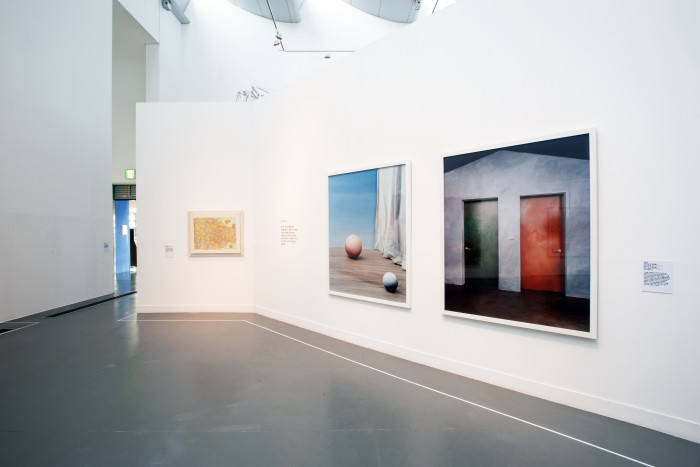
Since its foundation, the Eorini Kkumteul, which means, as suggested above, “a framework storing the dreams of children,” has played a role comparable to an oasis in the desert for the youth of Gyeonggi-do, who had long been given little opportunity to have any productive cultural experiences. The Children’s Dream Framework by the Gyeonggi Museum of Modern Art has been dedicated to the effort to solve the question of how it can help the young art lovers increase their understanding and interpretation of the complex human cultural heritage, such as works of contemporary art. To achieve the goal, the museum has developed effective routes for the children to easily approach the works and learn from them through programs designed for direct and indirect involvement. This effort was enthusiastically received by visiting families and children’s educational institutions in and around Ansan and Siheung, providing the museum with the momentum to significantly expand the spectrum of its services offered to art lovers of all ages in Gyeonggi-do.
Kkumteul, a Space of Possibility Open for All
The positive result could not, however, keep a new problem from arising to trouble the museum. As the space for the Children’s Dream Framework continued to expand in the museum, there began to appear complaints from adult visitors that the museum seemed to be drifting away from its original mission. They also insisted that the museum needed to reorganize staff and project responsibilities. The proposals collected through surveys of the members of the Visitor Panel, Operations Advisory Committee, and ordinary art lovers visiting the museum led the museum administration to conduct a comprehensive review of its activities. They concluded that, while the objectives of the museum services might be revised according to visitor demands, the extent of the changes should not be so great so that it could affect the museum’s original mission.
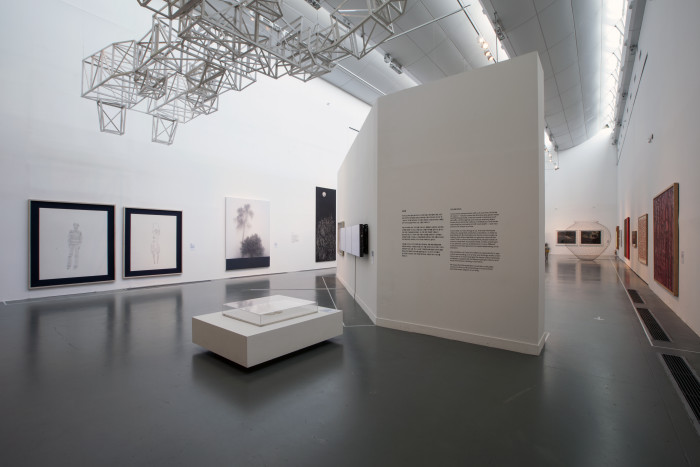
The “Kkumteul” launched in autumn of 2015 was a result of the effort made by the “Eorini Kkumteul” space jointly with the Gyeonggi Museum of Modern Art to solve the problems raised by their staff, advisors, and visitors. As is suggested by its name, made by removing the definitive word “Eorini” (meaning “children”), the institution has a new goal, which is providing cultural contents that matter to people of all ages who visit the museum. The “framework storing the dreams of children” is now enlarged to store the dreams of people of all ages who visit the museum. Apart from these changes, the museum strengthened its function as a provider of educational programs for children with programs that assure young museum visitors that it is still “their” museum. The museum’s new administration believes that the experience-focused programs specially designed for the education of toddlers and older kids, and special weekend educational programs and fun events aimed at enriching cultural experiences for families with children, should continue to remain at the center of its interest so that it can consolidate its identity as a crucial educational institution among the recipients of its programs.
This recent development at the museum led Kkumteul to be a provider of art exhibitions not only for children, but for teenagers and adults as well. Organizers of the exhibitions pay careful attention to their events so that these can satisfy both those who are seeking educational contents, and those who visit the museum just to appreciate the artwork, thus maintaining a balance between exhibitions for children and their parents. Each exhibition is also carefully put together to include educational contents that can benefit different age groups, from toddlers and children to teens and adults. Through these carefully organized events, the Kkumteul now can be described as a “platform” for museum-based education.
Creation of a Permanent Exhibition Home
Another major policy the museum adopted when the Kkumteul was launched as an educational platform was to acquire all the exhibited items for the museum collection. There has been strong demand for a permanent exhibition space since the Gyeonggi Museum of Modern Art opened which can accommodate the museum collection. The museum could not meet the demand, however, largely because as an institution specializing in modern art, it had to rely on special exhibitions with new themes, and because it had no extra space for a permanent exhibition. Despite the situation, the museum needed to deliver a long-term vision with specific content sufficient to accommodate annual school tours, expanding upon its function as an alternative educational institution. The recent implementation of new educational programs, such as the test-free semester program for middle school students in 2013, provided the museum with an opportunity to cooperate with schools and local communities to enhance its contribution to the regular education system.

The long struggle to secure a permanent exhibition space found a possible key to the solution when a new mission was set for Kkumteul to function as a sustainable educational platform. The new mission led the museum to organize Kkumteul exhibitions solely by depending on the museum collection, the asset of the provincial community, gradually completing the base to use the permanent exhibition hall for long-term exhibitions focusing on educational activities. The opening of the permanent exhibition hall also provided the museum with basic content with which it can effectively deal with various emergencies it may face in the course of its operations.
Quest for More Space
There was one last challenge left for Kkumteul to overcome before it could properly function as a basic educational platform by operating a permanent exhibition space. This was securing the space itself. Most of the museum’s educational facilities, including the experience-based education hall and seminar rooms, were transferred to the office and meeting room for the victims of the Sewol Ferry Disaster in 2014, resulting in a lack of space for the museum’s educational events. As a public institution, the museum actively participated in the national effort to come to terms with the tragic incident that brought so much pain and grief to so many Korean people. However, this also meant the museum had to suffer the situation that made it difficult for it to perform its basic activities to meet the demands of the art-loving public.
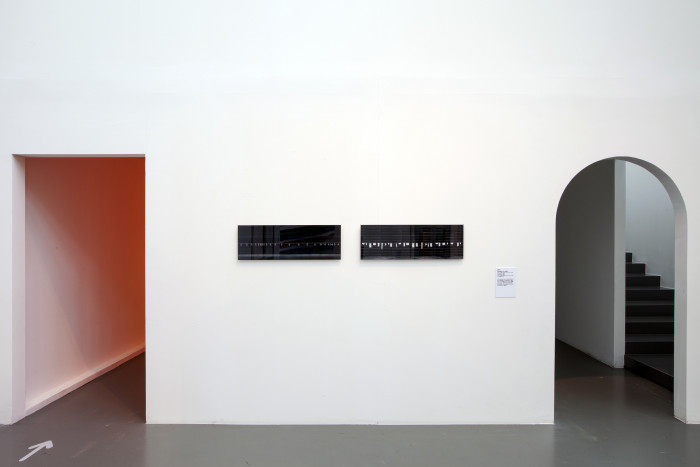
The Gyeonggi Museum of Modern Art conceived a few solutions to deal with the difficult situation. One of these was to turn part of the lobby into an open educational space where a range of educational programs connected with special exhibitions took place. The museum also decided to use part of the staff facilities as a venue for the education of adult museum visitors. The decision led to more efficient use of the museum space and the reopening of the museum academy, which had to be closed due to a lack of space. Another solution to secure space for educational programs involved the construction of a new upper floor inside the existing Kkumteul exhibition hall, thus creating a new classroom-sized space which could be used exclusively for educational programs.
Ensuring “the optimum use of space” was a key issue the Gyeonggi Museum of Modern Art was concerned about even in the early stages of planning the launch of the “Kkumteul.” Therefore, the space for the Eorinin Kkumteul, consisting of the lobby, experiential education space, special exhibition hall which occupied a fourth of the entire exhibition space, outdoor exhibition area, and second-floor terrace, had to be reorganized for the new children’s museum to fulfill its primary function via creating an adequately sized-space. As a solution, the museum reduced the size of the special exhibition hall to a sixth of the total floorage and, after an extended discussion on the creation of a new space to accommodate more exhibits, decided to build an education room inside the exhibition hall. The inflow of questions and the discussions to find solutions that followed resulted in killing multiple birds with one stone thanks to the effort of thinking differently.
New Art Education Unfolds in the Kkumteul
Then, with what new contents can the Kkumteul, as an educational platform and permanent exhibition hall, greet its visitors? The staff of the Gyeonggi Museum of Modern Art agreed that education at the museum should be based on the comprehensive understanding of art. They also considered that they needed to pay attention to the vehicles through which art connects with society, creating meanings for each side. It was in this context that they chose “color” as the first subject the Kkumteul would deal with. Color is the most basic element that occurs to someone, man or woman, young or old, when he or she thinks of art and the essential part of art, which creates meaning in the most active manner. The activity of coloring is particularly important to children because it plays a crucial role in their instinct of expressing themselves and communicating with others. The basics of communication through colors extend towards a social contract, exerting a strong influence upon our lives.
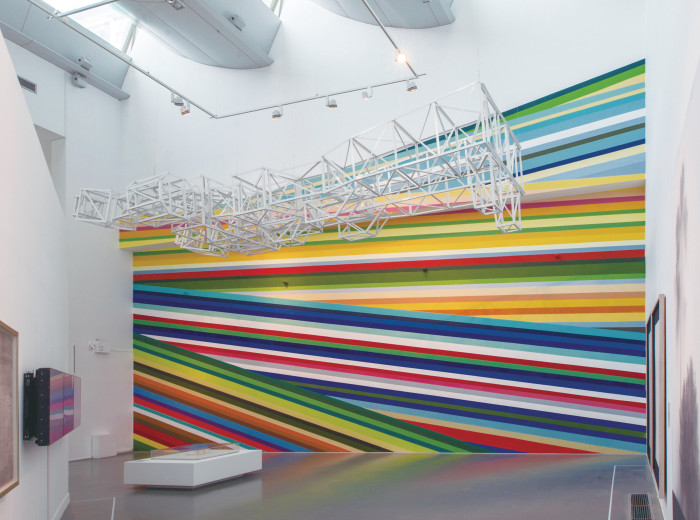
The first exhibition Kkumteul held to deliver such meaning, Colorful, presented about fifty works selected for their use of basic colors out of the Gyeonggi Museum of Modern Art’s collection. Each work had its own meaning, but what was considered more important was the colors, whose meaning became the base for a more comprehensive understanding of the exhibited works in general. The arrangement of the works according to the use of colors, starting from neutral colors and moving to pink, blue, green, red, yellow, and finally, mixed colors, was generally regarded as effective in understanding works containing multiple colors. In addition, after reaching the end of the exhibition, viewers were guided to climb the stairs up to the education room on the upper floor, suggesting to them that the Kkumteul was not an ordinary exhibition facility, but rather one designed for active educational activities.

The viewers on the education room were given an opportunity to have a unique spatial experience in which they could feel as if they were floating on the clouds, overlooking the works they had seen and enjoying them from a different point of view. The event was also organized to have some elements that slightly deviated from the subject of the event to increase the effect of the exhibition and education. One such deviation was given by the wall painting of colorful stripes located at the entrance of the exhibition hall. Produced by Kho Nak-beom specially for this event, the work featured colorful soaring stripes rendered with the colors he found in a few historically famous paintings for their connection with the atmosphere of the four seasons, spring, summer, autumn, and winter. The Kkumteul’s new quest for colors was seen outside the exhibition room, too, through the colorful barcode blind by Juhae Yang displayed on the first-story gallery overlooking the lake, and the luxurious chandelier by Yun Jeong-won hanging from the ceiling of the lobby. These unusual works were the results of communication made through colors.

The new challenge the Gyeonggi Museum of Modern Art took up with the opening the “Eorinin Kkumteul” in 2013 led to its reorganization as “Kkumteul,” a permanent exhibition and education facility designed to meet public demand related to the function, mission, and usage of the museum, as well as its aims, such as the education of and communication with the local community. In short, the Kkumteul was launched as an advanced form of the Eorini Kkumteul facility, designed to better cope with the challenge that had troubled it. The Gyeonggi Museum of Modern Art will from now on put on basic art education programs focused on the elements that characterize art, such as lines, space, form, proportions, and color. It will also provide a variety of educational content that can show the influence of art on the entire gamut of our life, thus fulfilling its mission for open social education. We, the staff of the Gyeonggi Museum of Modern Art, are anticipating active participation from art lovers as we seek to fulfill the Kkumteul’s mission to provide beneficial museum experiences for a wider public. We also hope to have their attention and support for our dedication to closer communication between our museum and the art-loving public.

Main poster
Participated artists
Kang Un / Kho Nak-beom / Quac In-sik / Kim Gui-line /
Kim Bong-tae
Kim Soo-Yeon / Kim Shin-il / Kim Hee-jung / Noh Sang-gyun / Moon Bum
Moon Bong-sun / Park Sung-soo / Park Hyung-geun / Bang Myung-joo / apparat-c
Yang Ju-hae / Ryu Bi-ho / Yoo Hyun-mi / Yun Suk-nam / Yoon Jeong-mee
Yoon Jeong-won / Rhee Ki-bong / Lee Ki-il / Lee Min-ho / Lee Bul / Lee jae-sam
Lee Jin-hyeck / Jeong Kwang-ho / Jeong Zik-seong / Hong Myung-seop / Hyun Hong
<ggc의 모든 콘텐츠는 저작권법의 보호를 받습니다.>



